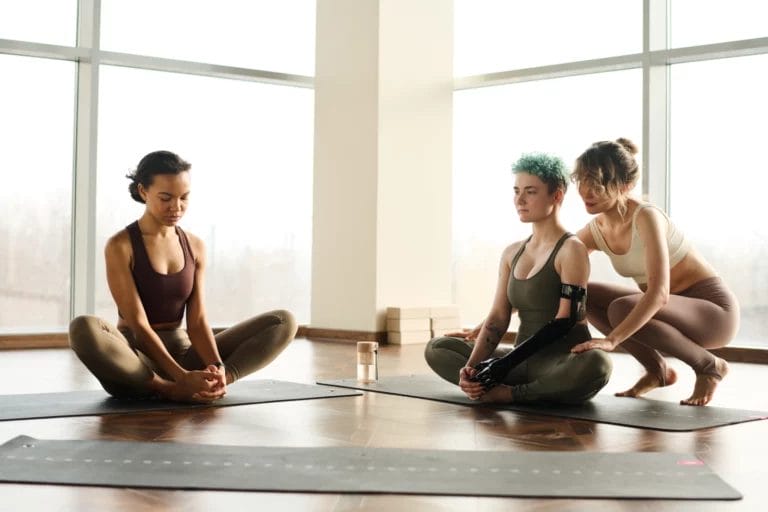- Last Updated:
- 9/24/2024
- Chelsea Ramsey
From vinyasa flow to Bikram and goat yoga, yoga continues to be one of the most practiced fitness and wellness activities worldwide. With all the health benefits of yoga, it’s no surprise to see that this 5000-year-old practice is still so popular.
Here are our top tips to help you enhance your yoga studio marketing plan.

1. Identify Your Audience
First and foremost: know your audience.
Research your target clients’ demographics, habits, needs, interests, worries, goals, and more.
This information gives you an outline of a general client persona to help tailor your marketing efforts, communication style, and content topics specifically to address the things that most resonate with them.
Here’s how to pursue your audience:
- Regular, active engagement
- Consistent communication across multiple channels (email, social media)
- Monitoring your performance analytics on your website and/or social media
- Staying on top of trends, research, and information
Consistent, tailored communication with your audience is important for yoga instructors as a means to stay fresh in their minds, foster a sense of community, and learn more about what they want from their yoga experience.

2. Inject Personality Into Your Brand
One of the best ways to make your practice stand out is a strong, consistent, and unique brand voice. Other instructors can teach vinyasa or hatha yoga, but no other instructor is you.
Letting your personality come through in the way you communicate and interact with your audience helps you stand out, become memorable, and feel more relatable.
Making your personality a part of your brand can:
- Build more relationships, quicker
- Cultivate trust by providing clients the feeling that they know you a little better
- Inspire students to work with you because you feel human and personable
- Drive sales because of increased trust, relatability, and connection
You don’t need to have a “big” personality to incorporate it into your brand. You can inject relatability in many ways, like the styles of clothes you teach in, the language you use, the phrases you repeat.
Other ways to showcase and use your personality include:
- Displaying photos and/or videos of yourself on your website
- Using attractive color palettes on your website or in your outfits
- Sharing about how you became a yoga teacher
Stay current on trends, information, and advertising strategies, but don’t lose sight of what makes you you. At the end of the day, your students may not remember what you said or what flows you performed, but they will remember how you made them feel, both in and out of the studio.
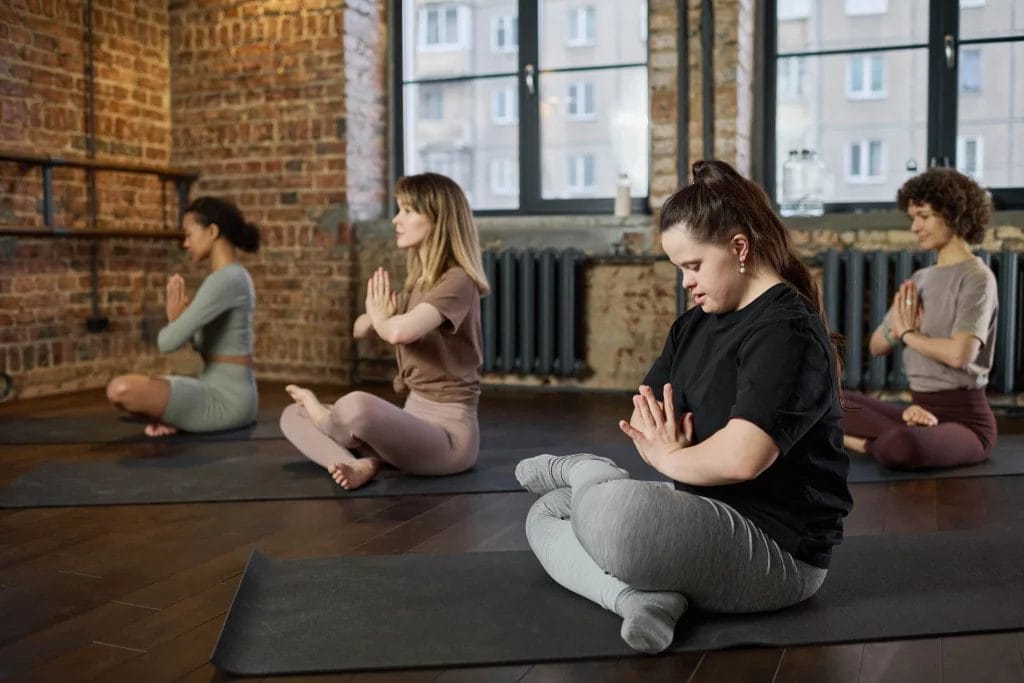
3. Make Digital Marketing Your Best Friend
Digital marketing uses the internet and online channels to promote awareness of, interaction with, and purchases from a business. It’s known for its use of social media, search engine optimization, email, and targeted advertising.
In this tech-driven age, you can’t develop a successful marketing strategy for your yoga studio without it.
Search Engine Optimization (SEO)
SEO employs tactics for improving your website’s position in search engine results.
When determining which websites and businesses to display, Google analyzes these qualities of each site:
- Relevance: how well the business matches what the user wants.
- Quality: how trustworthy the content is.
- Usability: how strong the website’s performance is (i.e. its page speed or mobile-friendliness).
Optimization involves conducting keyword research, creating quality content, and building discoverable pages.
Leveraging these things while building and updating your website helps you appear higher in search results, which gets more eyes on your site and more prospective students that can turn into paying students.
Local SEO
Local SEO is a way to boost your business’ visibility with a local audience in location-based, unpaid search engine results. It’s what helps Google understand where you are and what you offer.
For local rankings, Google analyzes these characteristics:
- Relevance: if the business is the best match for what the user is searching for.
- Prominence: how well-known and reviewed the business is.
- Distance: how far the business is from the likely search location.
To effectively use local SEO you need to conduct local keyword research, look into competitors, and track your analytics with the help of an SEO tool like Google Analytics.
Prospects from your local SEO efforts are geographically closer to you and are looking for the type of services you provide, which make them even more likely to turn into active clients.
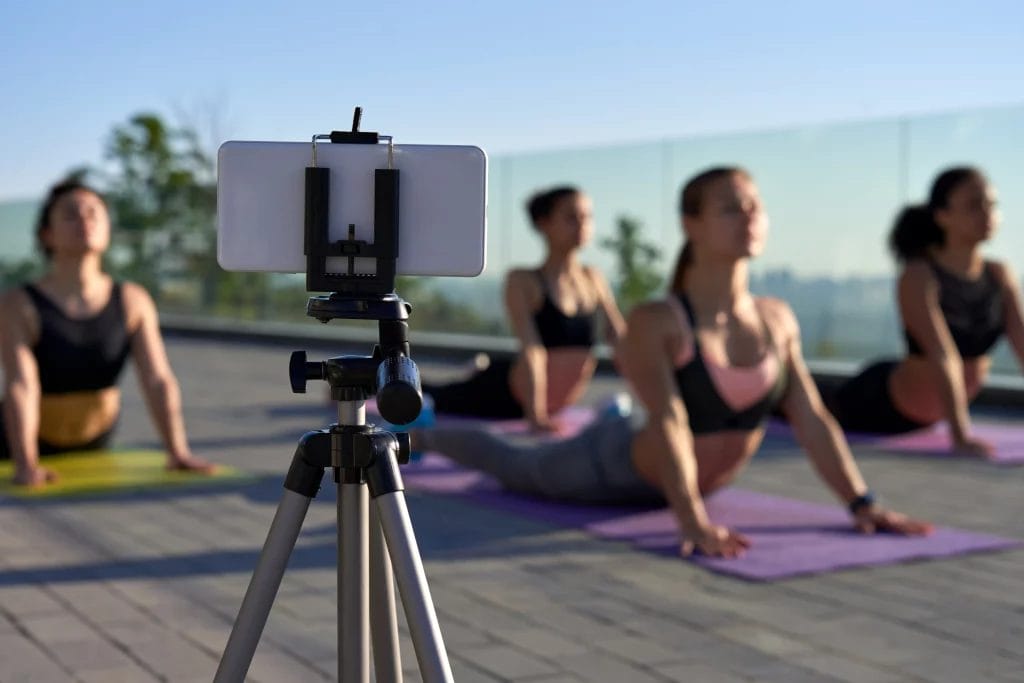
Social Media
Given that there are around 4.9 billion social media users in the world, using yoga studio social media marketing strategy is a smart, low-cost way to generate more interest in your services.
Social media allows you to integrate other aspects of a good marketing strategy as well by accomplishing the following:
- Increase brand awareness
- Boost engagement with your target audience(s)
- Foster relationships
- Lead generation
- Increase website traffic and improved SEO results
To get the best results from social channels, be consistent with your brand voice and posts, engage with users, and add variety in your content. Other tips for using social media include:
- Use hashtags
- Repurpose/recycle content across platforms
- Link platforms
- Utilize scheduling/management apps like Hootsuite
- Use content or design tools like Canva
- Analyze and track metrics
Digital Ads
Some marketing methods take a little time to drive results, but paid advertisements can provide more immediate benefits, feedback, and/or traffic for your studio.
There are several options when it comes to paid channels:
- Search engine ads: appears in internet search results
- Display advertising: appears in places like websites and social media channels
- Social media ads: videos or still ads on Facebook, Instagram, TikTok etc.
- Video ads: shown on TV, streaming services, etc.
Based on the client persona you’ve created previously, you can decide which channels your target audience would most likely come across your ads.
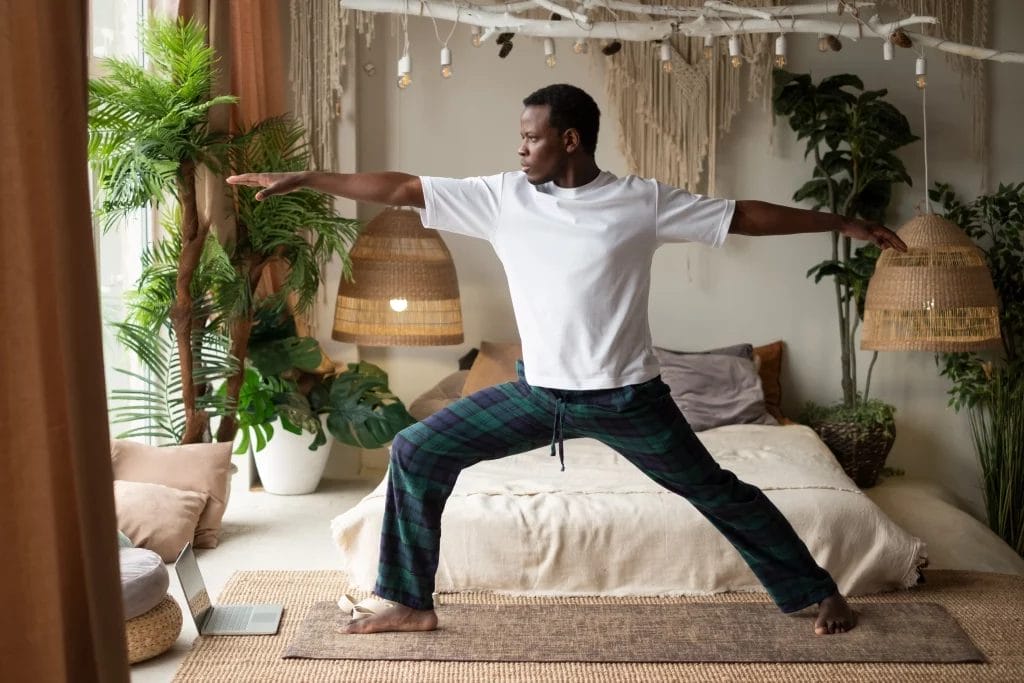
Email Marketing
Email has remained one of the best methods of digital marketing, with 73% of marketers citing a medium or high return on investment rate. It’s a cost-effective way for you to communicate with your audience via tailored, personalized messages.
Develop ways to collect emails for your list through website forms, social media, events, contests/giveaways, and/or a combination of all of the above!
Tips to craft an effective email campaign include:
- Personalization: create subgroups in your database and tailor messaging for each group.
- Timing: avoid overloading your subscribers’ inbox with a thoughtful sending schedule.
- Engaging subject lines: subject lines are the hook of your emails, make them stand out.
- CTAs: include clear and compelling calls to action to encourage recipients to make a move.
- Automation: use automated email programs to simplify the process.
You can also use email to continue fostering relationships with your current and prospective clients. Use your email content to make recipients feel like part of the “in-crowd” by informing them about upcoming events, special offers, interesting blog posts, and promotions.
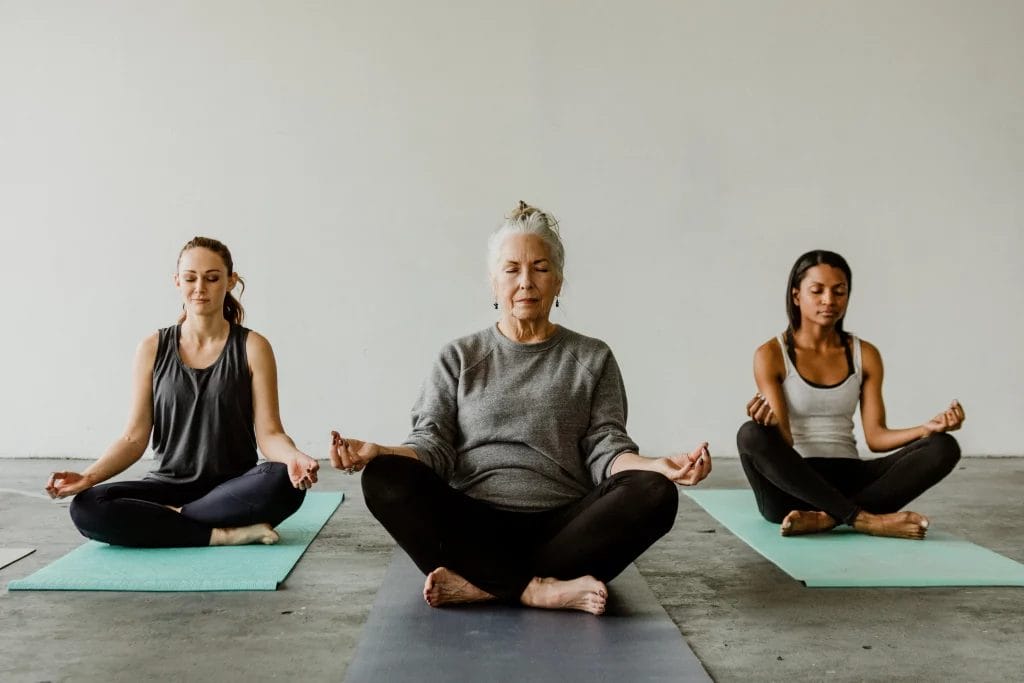
4. Don’t Sleep on Traditional Marketing
Traditional marketing encompasses all the marketing a business could do offline. This includes things like radio or television ads, referral and loyalty programs, direct mail, newspapers, billboards, and even word-of-mouth.
In fact, one Nielsen report listed 92% of consumers trusted word-of-mouth referrals more than any other advertising.
Traditional marketing avenues can help you establish a sense of physical connectedness to the world around you, an important tenet of many yoga practices. It can also lend more credibility to your studio and trust in you with community members who spend less time online or are more skeptical of online ads.
5. Become a Devoted Member of Your Community
Get involved!
Set up a booth at local markets. Participate in your city’s fitness and wellness festivals. Host special events and workshops in conjunction with these or other businesses.
Increasing your exposure in the community will increase your overall recognition so when people are interested in learning yoga, or whenever yoga comes up, they think of you.
You can partner with other local businesses for additional cross-promotional exposure. This can introduce your studio to new community members outside of your typical marketing audience.
Recognition in the community also allows you to build more relationships and boosts your credibility and trustworthiness. Given truthfulness is another tenet of many yoga practices, and trust is one of the most important factors in buying decisions, your business’ trustworthy reputation is crucial.
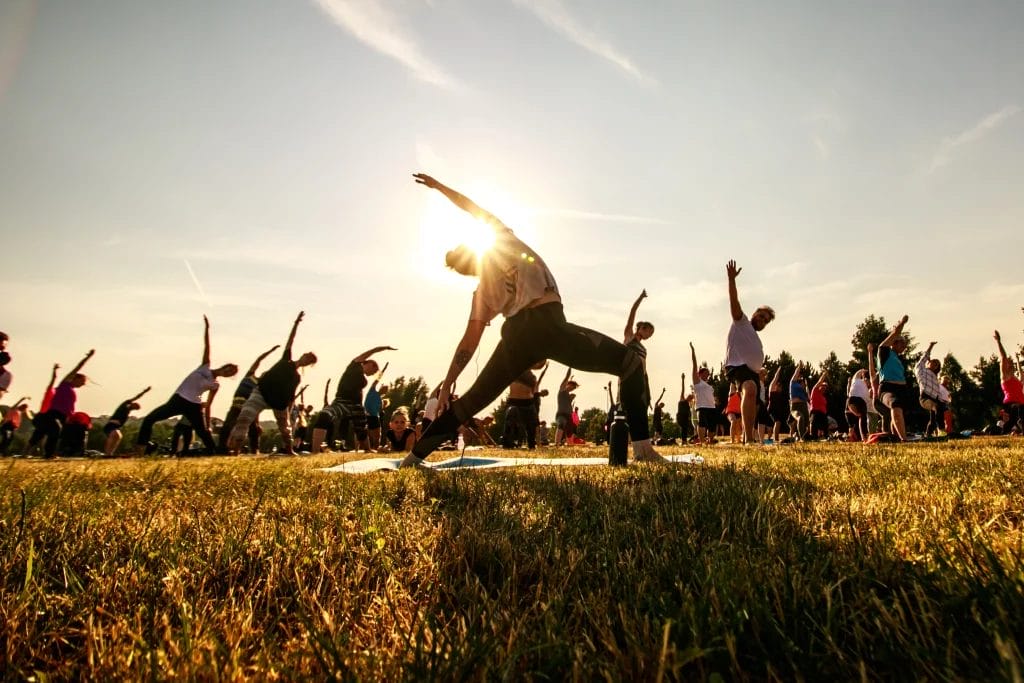
Key Takeaways for Your Yoga Studio Marketing Strategy
TL;DR:
- Know your audience: figure out who your target students are and speak directly to them in your messaging.
- Pursue your audience: maintain consistent, open, and engaging communication across multiple channels.
- Play into personality: find your own voice to stand out from other studios and instructors.
- Use digital marketing tools: apply search optimization techniques in tandem with social media platforms and emails to drive traffic to your studio’s website.
- Tap into traditional marketing: distribute flyers in high traffic community areas, take out print ads in things like magazines and papers in your target area, generate referrals with a referral reward system, or pitch a great story and land a spot on your local news channel’s morning show.
- Get involved: network in your local community via things like wellness festivals and community days; cross-promotional business partnerships, and special events or workshops.
Protect Your Growing Yoga Studio
Don’t be afraid to try new techniques when it comes to finding new students. Sometimes a good stretch is all you need to improve your position.
Increased traffic with more clients or more classes also leads to an increased chance of accidents and injuries. Be prepared and well-informed about how to protect your business with yoga liability insurance.



